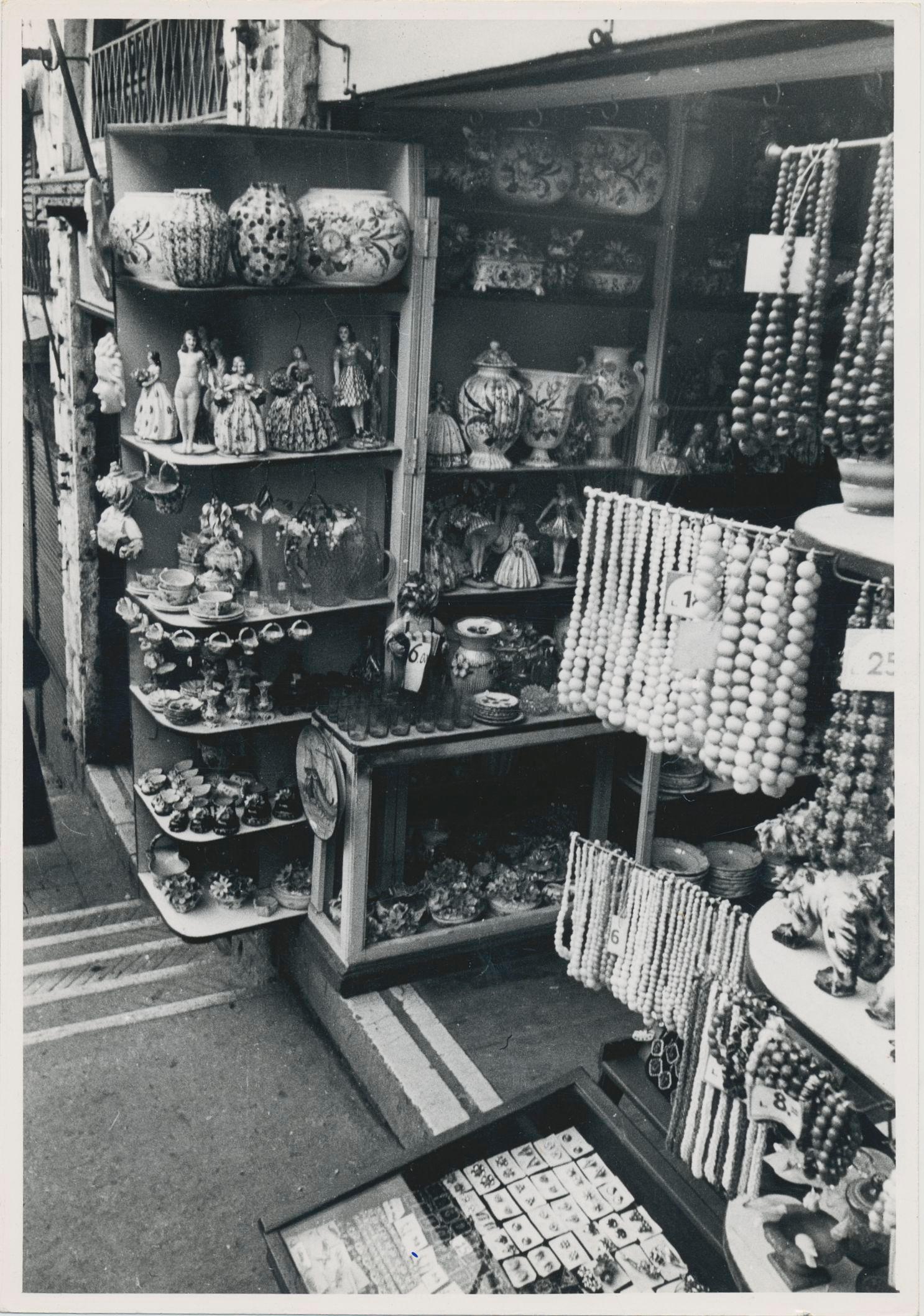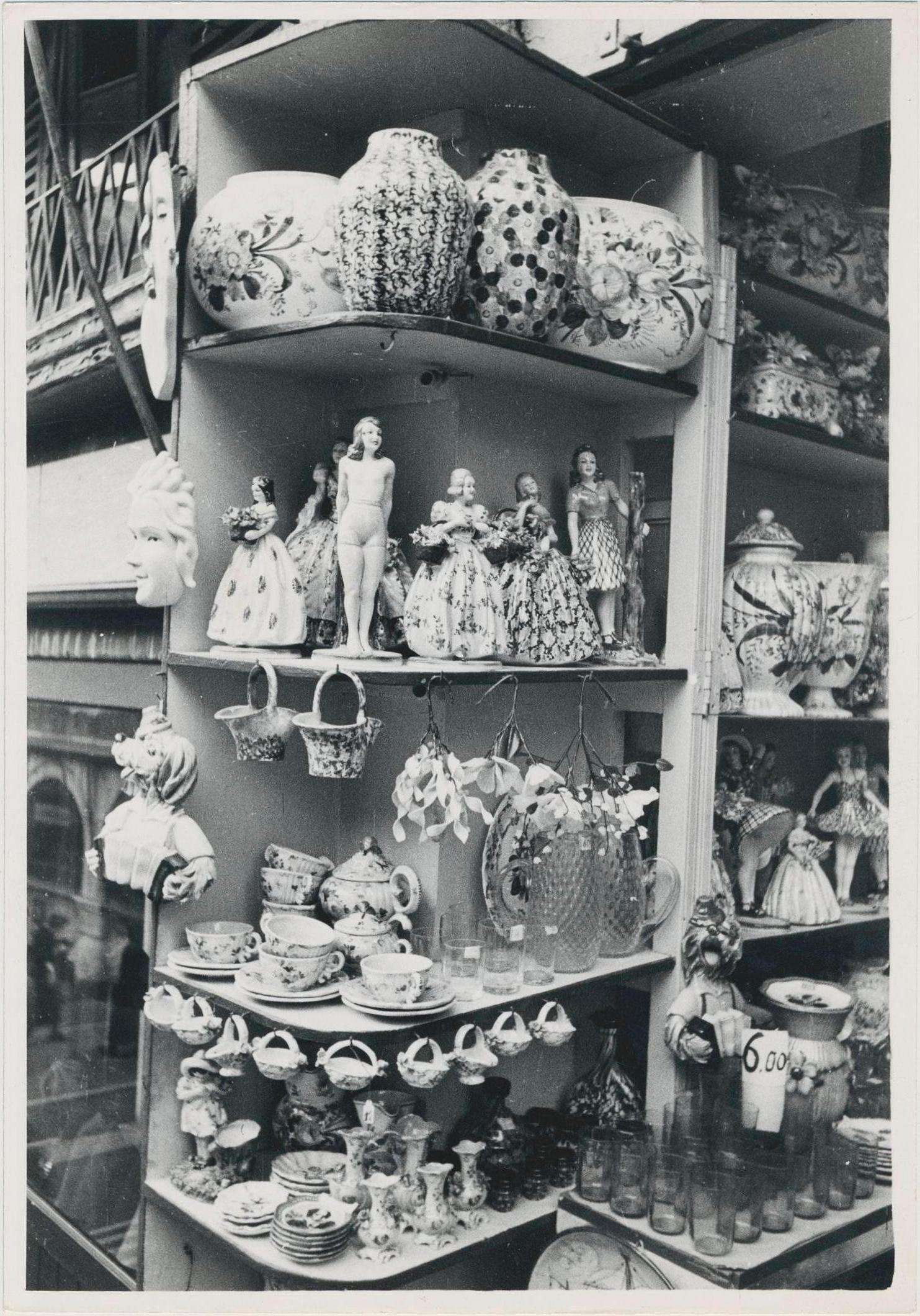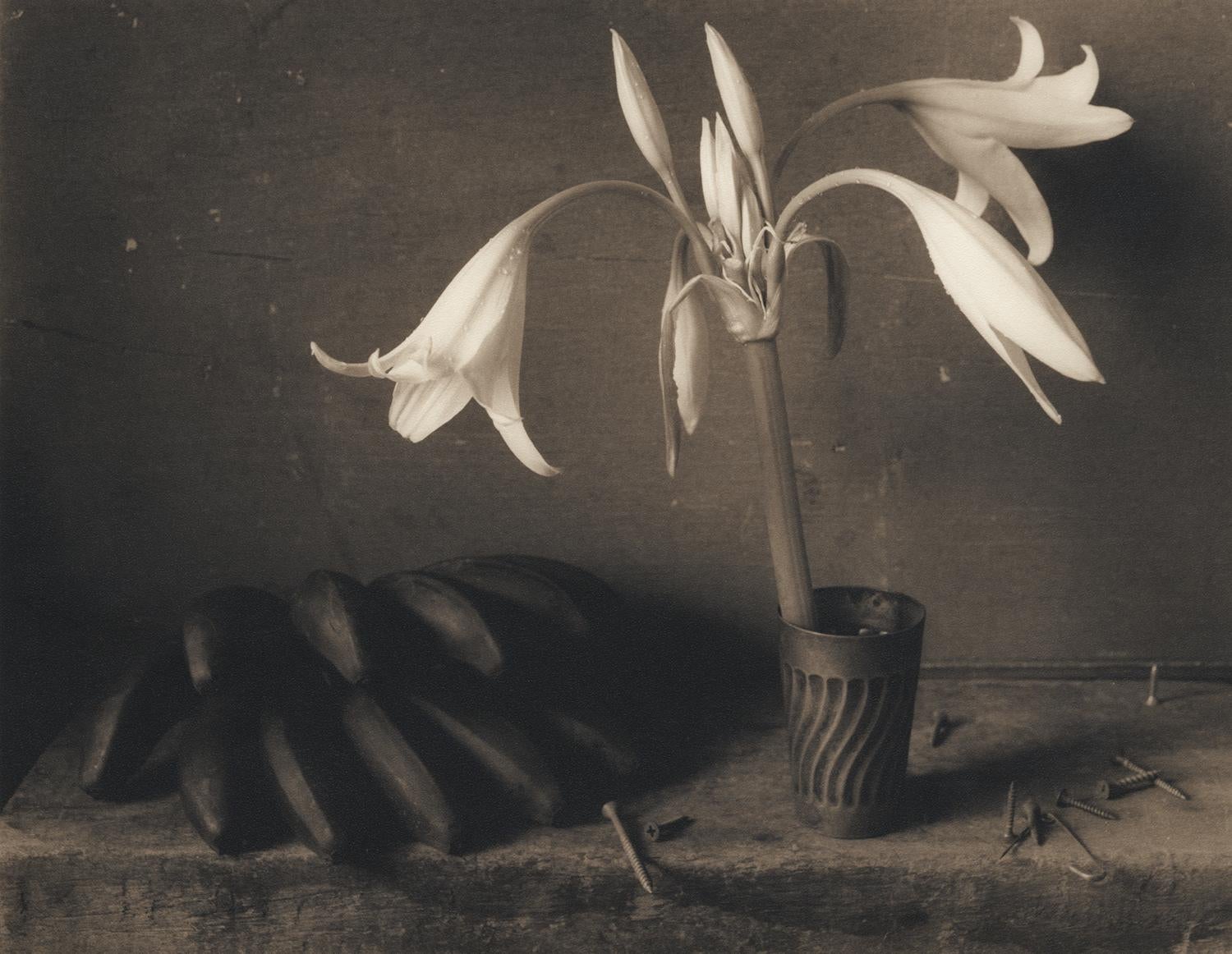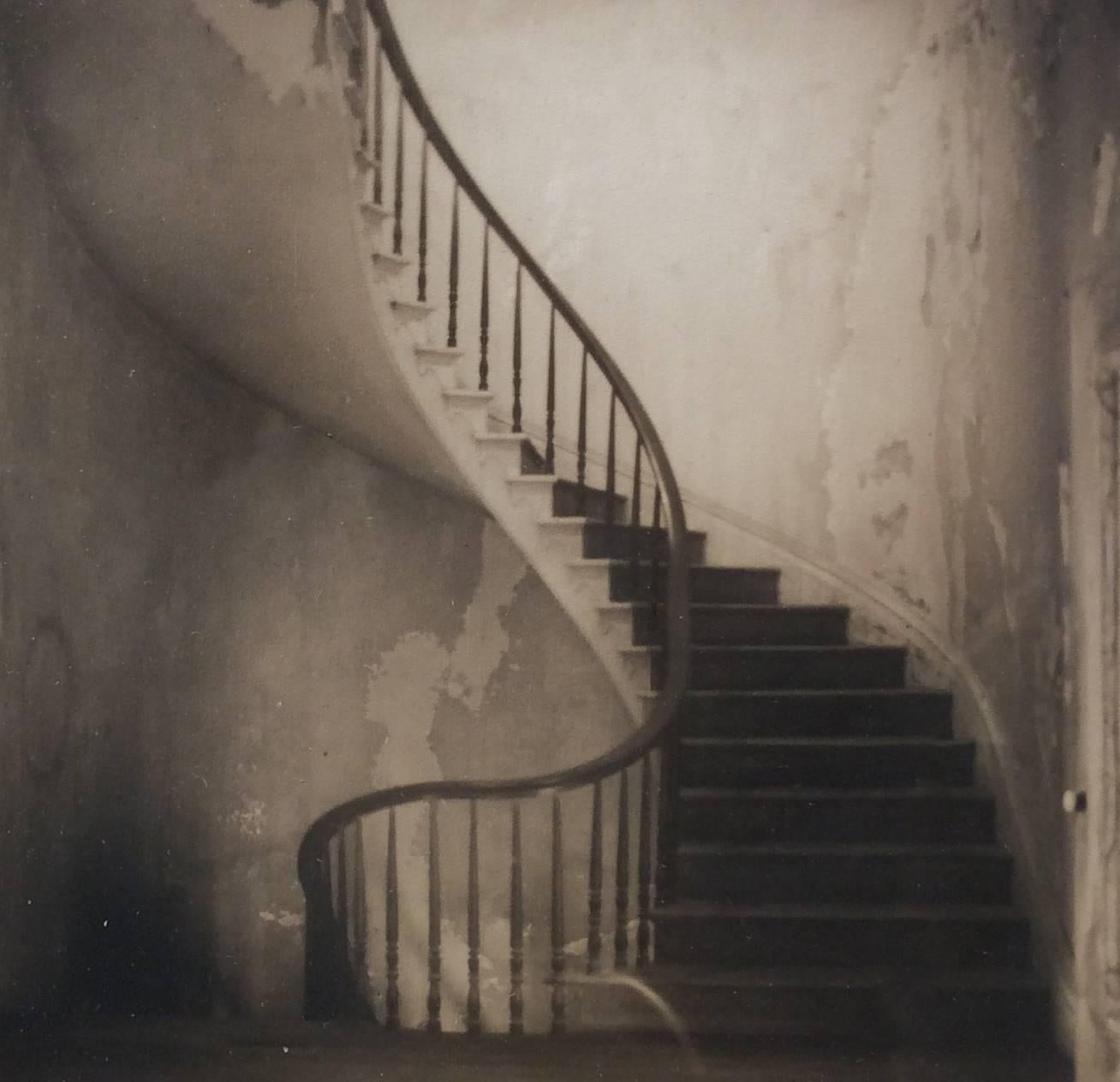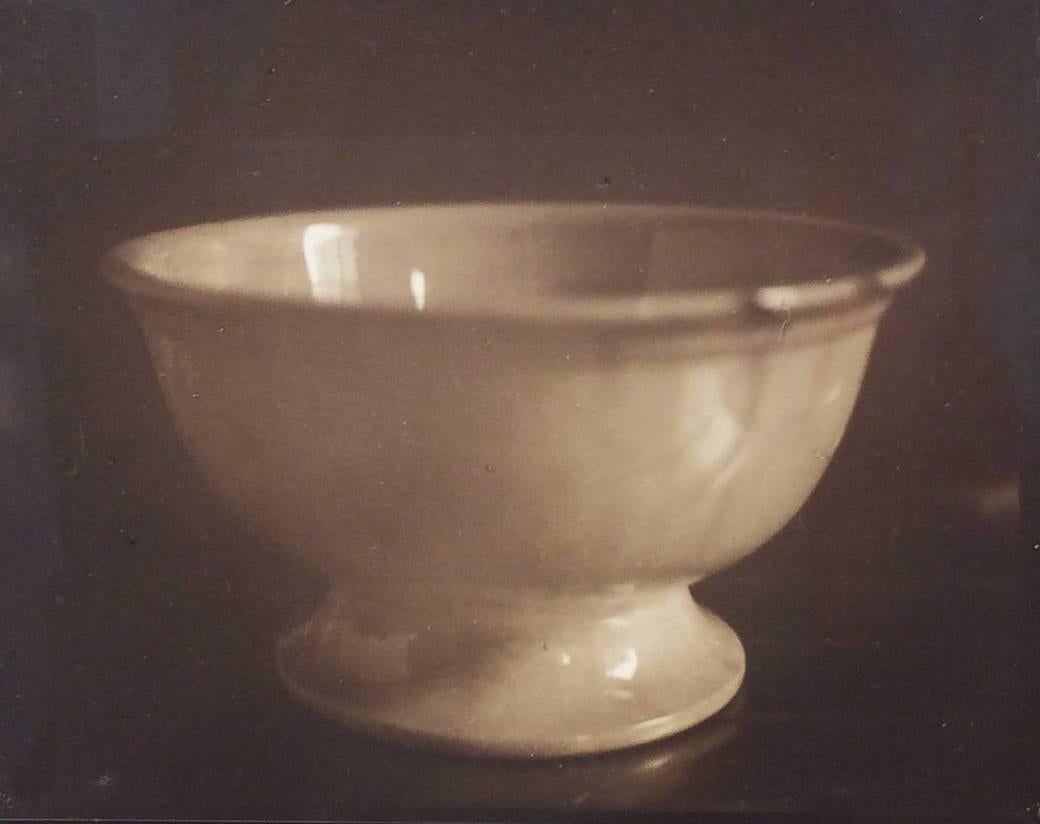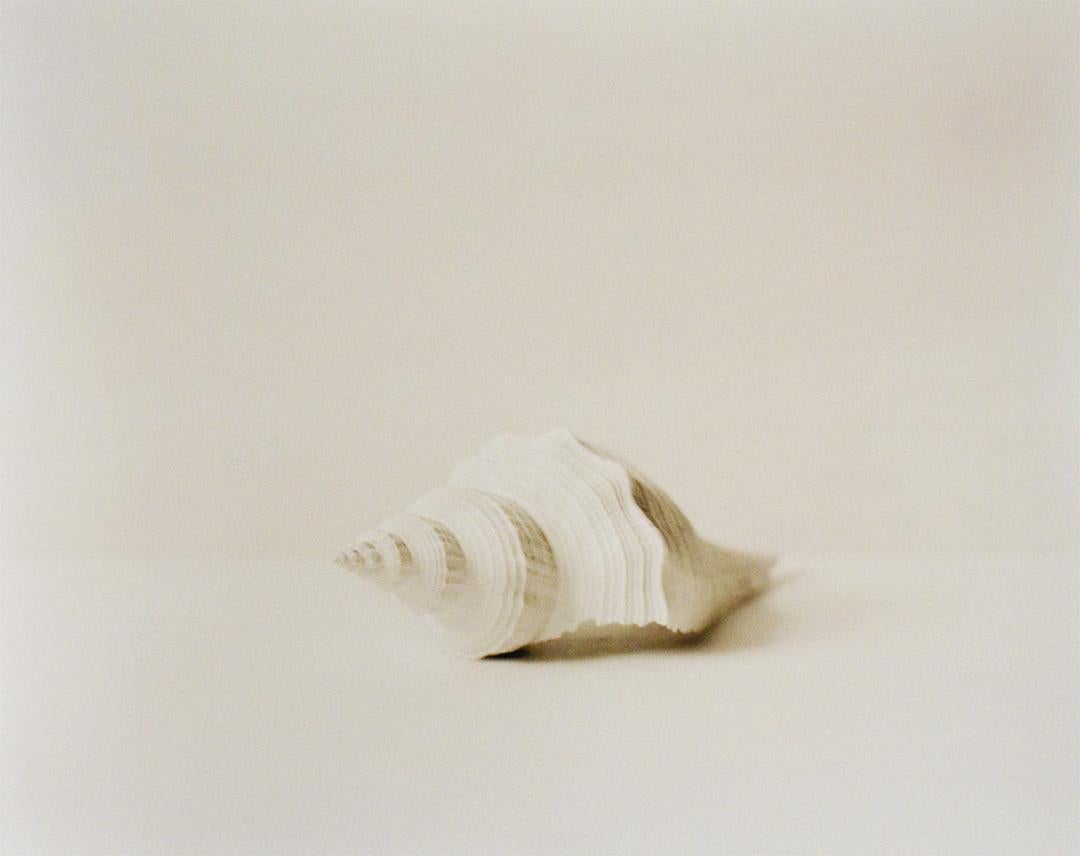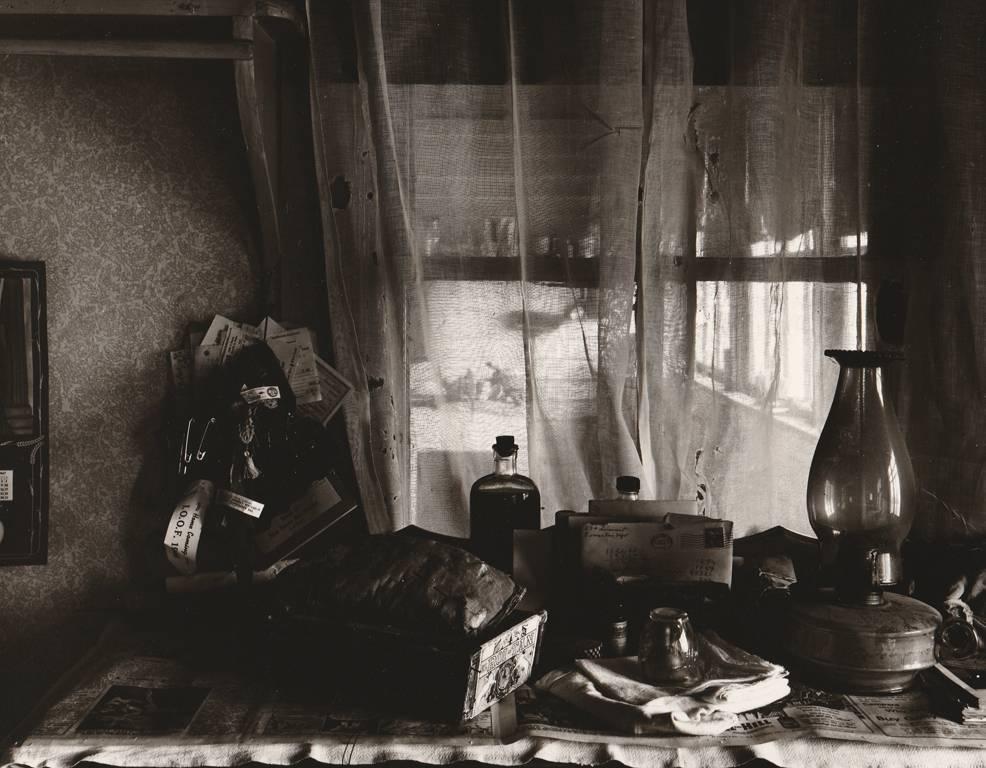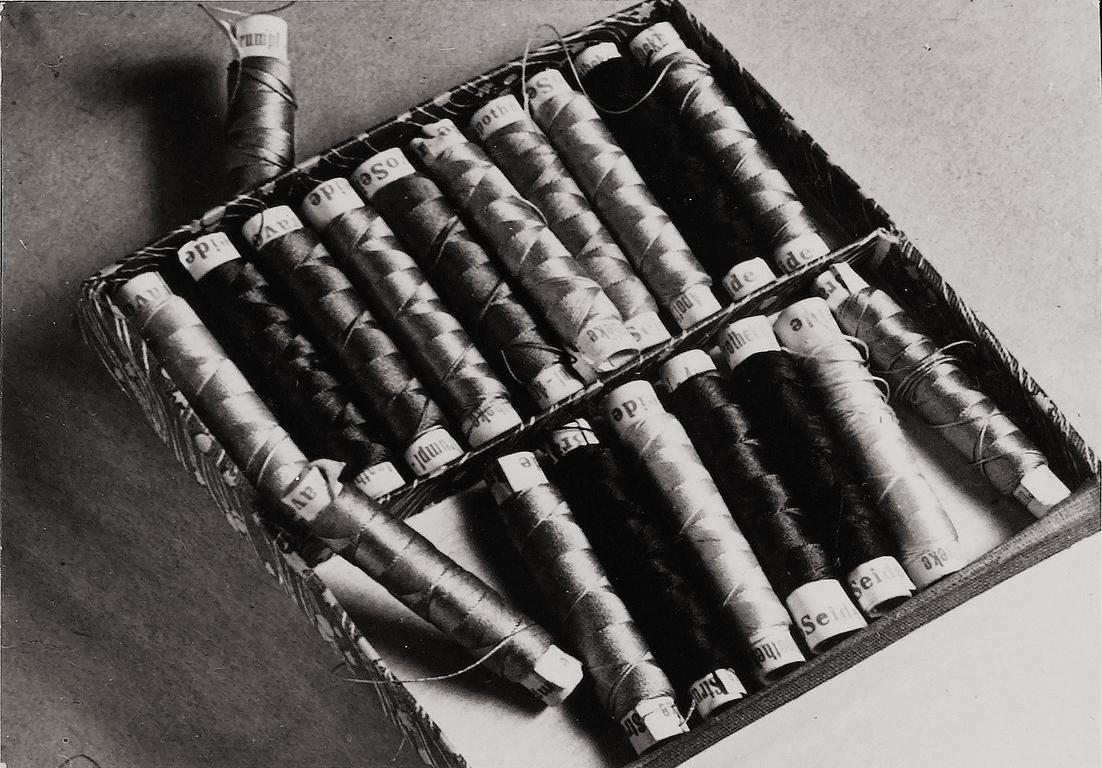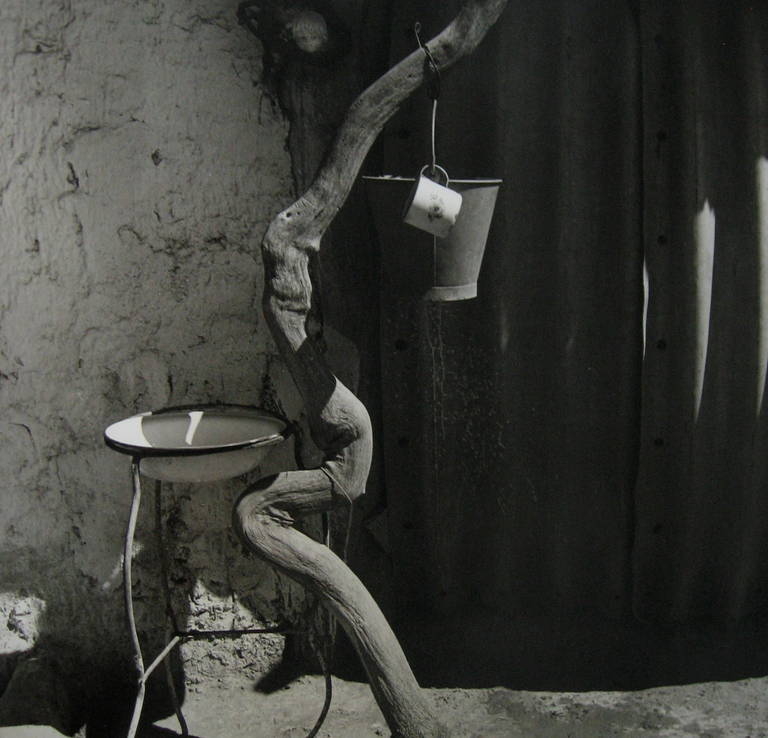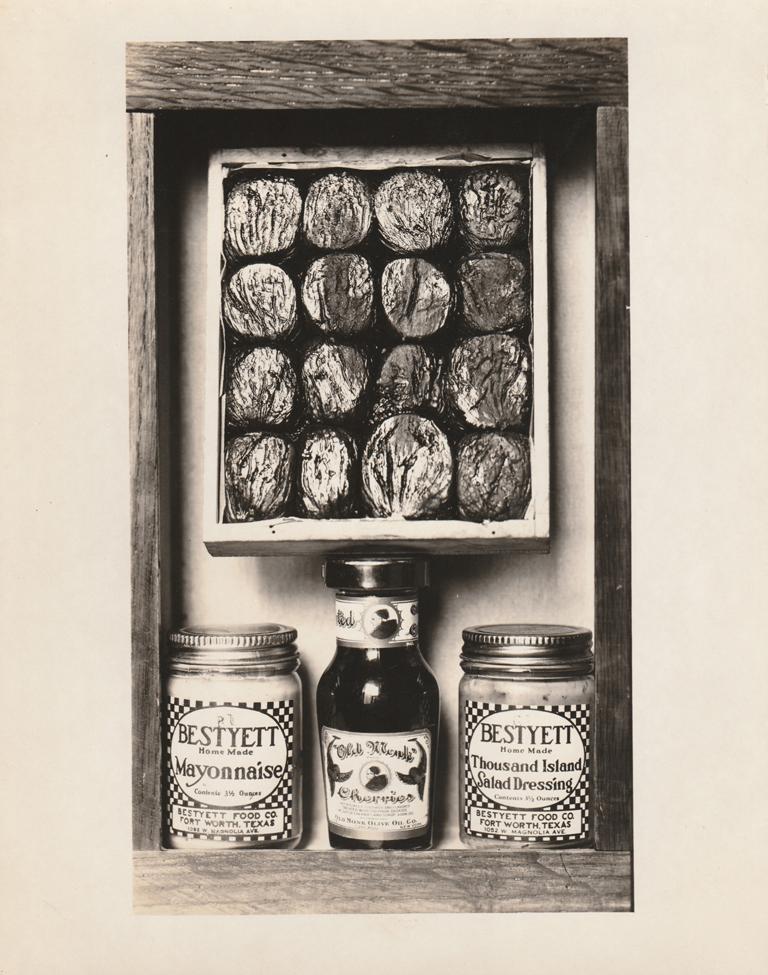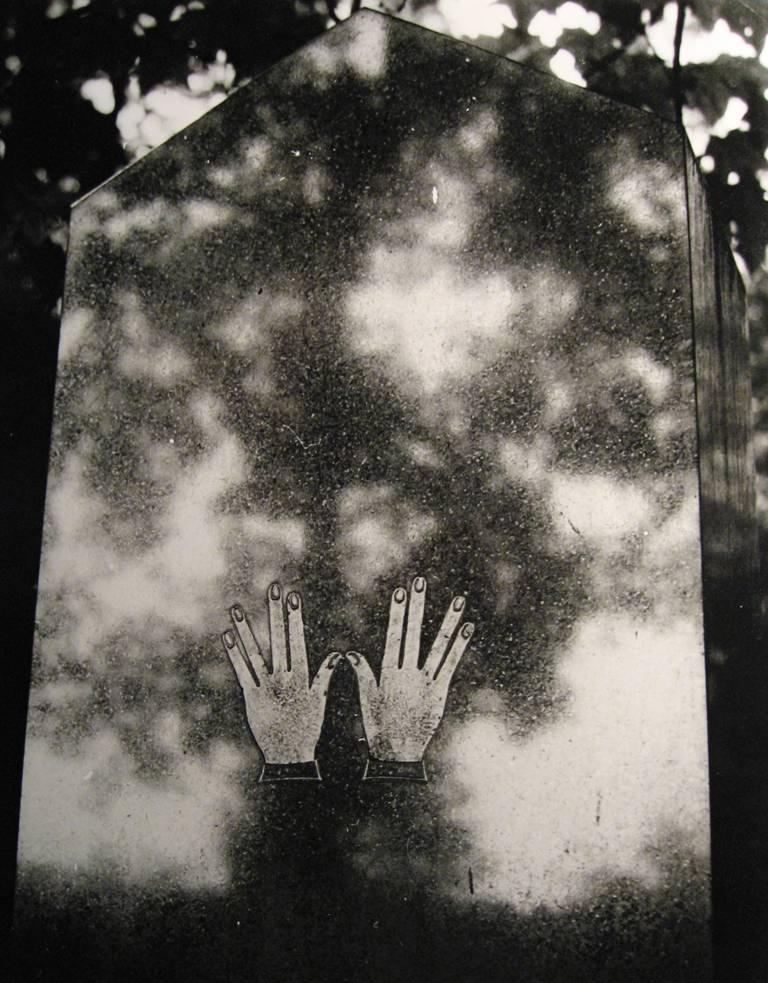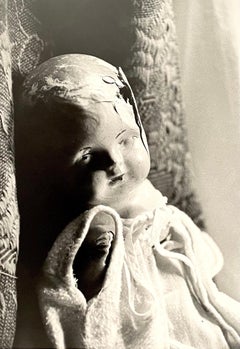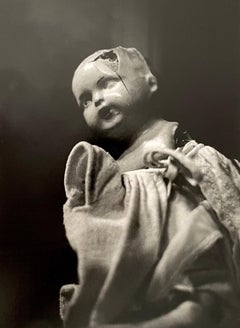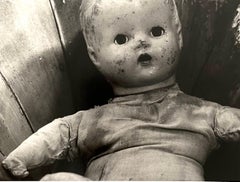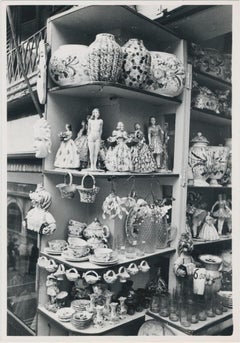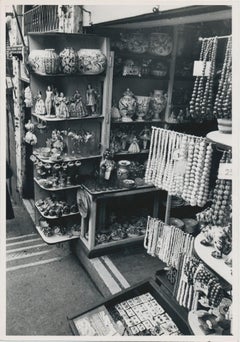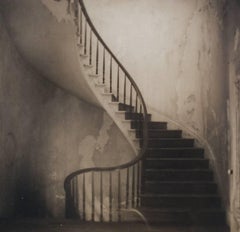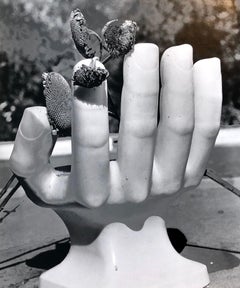
Photo Of Pedro Friedeberg Hand Chair Vintage Silver Gelatin Photograph
View Similar Items
Want more images or videos?
Request additional images or videos from the seller
1 of 11
Naomi SavagePhoto Of Pedro Friedeberg Hand Chair Vintage Silver Gelatin Photograph1981
1981
$2,400List Price
About the Item
- Creator:Naomi Savage (1927 - 2005, American)
- Creation Year:1981
- Dimensions:Height: 13.25 in (33.66 cm)Width: 10.5 in (26.67 cm)
- Medium:
- Movement & Style:
- Period:
- Condition:good. attached to mat at top. mat has very light wear.
- Gallery Location:Surfside, FL
- Reference Number:1stDibs: LU3825531242
About the Seller
4.9
Platinum Seller
Premium sellers with a 4.7+ rating and 24-hour response times
Established in 1995
1stDibs seller since 2014
1,777 sales on 1stDibs
Typical response time: 1 hour
Authenticity Guarantee
In the unlikely event there’s an issue with an item’s authenticity, contact us within 1 year for a full refund. DetailsMoney-Back Guarantee
If your item is not as described, is damaged in transit, or does not arrive, contact us within 7 days for a full refund. Details24-Hour Cancellation
You have a 24-hour grace period in which to reconsider your purchase, with no questions asked.Vetted Professional Sellers
Our world-class sellers must adhere to strict standards for service and quality, maintaining the integrity of our listings.Price-Match Guarantee
If you find that a seller listed the same item for a lower price elsewhere, we’ll match it.Trusted Global Delivery
Our best-in-class carrier network provides specialized shipping options worldwide, including custom delivery.More From This Seller
View AllPhoto Of Pedro Friedeberg Hand Chair Vintage Silver Gelatin Photograph
By Naomi Savage
Located in Surfside, FL
This depicts a chair in the manner of Mexican surrealist modernist Pedro Friedeberg with a dried flowers.
It is a hand signed, titled and dated vintage silver gelatin print photograph. and bears the artists studio stamp verso.
Naomi Siegler Savage (1927 – 2005) was an American woman photographer.
A native of Princeton, New Jersey, Naomi Savage was the niece of artist Man Ray. She first studied photography under Berenice Abbott at the New School for Social Research in 1943, following this with studies in art, photography, and music at Bennington College from 1944 until 1947. The next year she spent in California with her uncle, studying his techniques. When she returned to New York in 1948, she combined her love of music with her skill in photography by taking portraits of the best known composers of day: Aaron Copland, John Cage, Virgil Thomson, etc. (over 30 in all). In 1950 she married the architect and sculptor David Savage, with whom she moved to Paris, living there for some years.
During her career Savage received an award from the Cassandra Foundation in 1970, and a photography fellowship from the National Endowment for the Arts in 1971. In 1976 she received the silver award from the Art Directors Club. Later in life, Savage returned to live in Princeton, where she died.
Savage was heavily influenced by her uncle, the avant garde artist Man Ray, prompting her to experiment with the medium of photography, combining traditional techniques with more unusual processes, including some of her own design. She worked extensively with photogravure and photoengraving, transforming these mechanical printing techniques to be used for aesthetic effects rather than duplication.
Unlike many photographers, Savage considered the metal plate that photographs are etched on to be a work of art in its own right. She pioneered the use of using the photographic metal plate to produce a three dimensional form with a metallic surface.
Savage explored variations in color and texture in her work often by using inked and intaglio relief prints. Many of her works were created by combining media such as collage, negative images, texture screening, multiple exposure, photograms, solarization, toning, laser printing on metallic foils. Her works focus on a variety of subject matter and imagery, which has included portraits, landscapes, human figures, mannequins, masks, toys, kitchen utensils, dental and ophthalmological equipment.
Her approach represents an involvement with "process as medium," and an interest in art as image manipulation, a pursuit shared by contemporaries like Robert Heinecken, Betty Hahn, and Bea Nettles. She has experimented extensively with photogravure and photoengraving, employing these mechanical printing techniques for aesthetic effects rather than duplication.
Savage uses inked and intaglio relief prints to explore variations in color and texture, and considers the metal plate on which the photograph has been etched to be a work of art in its own right. She has also combined media--collage, negative images, texture screening, multiple exposure, photograms, solarization, toning, printing on metallic foils--and made laser color prints.
Several of her pieces are owned by the Museum of Modern Art, and she is represented as well in the collections of the Art Institute of Chicago, the International Center for Photography, the Fogg Art Museum, the Museum of Fine Arts, Houston, and the Madison Art Center. A photo engraved mural depicting the life of Lyndon Baines Johnson is a centerpiece of the Lyndon Baines Johnson Library and Museum. A collection of her papers relating to the life of Man Ray is held by the Archives of American Art at the Smithsonian Institution.
She was included in the show Making Space at MoMA in 2017. It shone a spotlight on the stunning achievements of women artists between the end of World War II (1945) and by Lee Krasner, Helen Frankenthaler, and Joan Mitchell; the radical geometries by Lygia Clark, Lygia Pape, and Gego; and the reductive abstractions of Agnes Martin, Anne Truitt, and Jo Baer; the fiber weavings of Magdalena Abakanowicz, Sheila Hicks, and Lenore Tawney; and the process-oriented sculptures of Lee Bontecou, Louise Bourgeois, and Eva Hesse. The exhibition also featured treasures such as collages by Anne Ryan, photographs by Gertrudes Altschul, Naomi Savage, Ruth Asawa, Carol Rama, and Alma Woodsey Thomas...
Category
1980s Modern Black and White Photography
Materials
Silver Gelatin
Vintage Silver Gelatin Photograph Surrealist Doll Art Photo, Jazz Photographer
Located in Surfside, FL
These were from a show of her work. Influenced by Surrealism and Dada Photographs
these are images of old children's dolls in various states of decay. These bear the influence of Hans Bellmer, Dora Maar and Man Ray.
Jo Ann Krivin born in Reasnor, Iowa in 1933, daughter to Earl Guthrie and Lillie Cramer. She graduated from Simpson College in Indianola, Iowa, with a bachelor of music degree in voice. She became a copywriter for the CBS Television affiliate in Des Moines, and then a public relations writer for Columbia Records in New York. She later owned and directed The Cramer Gallery in Glen Rock, N.J. Krivin photographed many jazz musicians during the 1980s and 1990s, and published two books of her jazz photos, "25 Years of the Jazz Room at William Paterson University" and "Jazz Studies." Her jazz and doll portraits have been exhibited in group and solo shows, museums, university galleries, and jazz festivals. She was married for over 50 years to painter, musician, and educator Martin Krivin.
One of the few women in the field of jazz photography, JoAnn Krivin documented the professional jazz scene from the late 1970's until the late 1990's photographing close to 700 musicians. Her works have been exhibited frequently in solo shows at festivals, museums and galleries across the country. She has served as a still photographer for New Jersey Public Television and has contributed to a variety of national jazz publications. Her book, Twenty Five Years of the Jazz Room at William Paterson University, was published in 2003. Woman artist with a feminist tinge to these photographs. Her work was exhibited at the Ben Shahn Galleries. The exhibit featured photographs of some of the jazz world’s most well-known musicians, including Sonny Rollins, Joe Williams, Art Farmer, Benny Golson, Milt Hinton...
Category
20th Century Surrealist Black and White Photography
Materials
Silver Gelatin
Vintage Silver Gelatin Photograph Surrealist Doll Art Photo, Jazz Photographer
Located in Surfside, FL
These were from a show of her work. Influenced by Surrealism and Dada Photographs
these are images of old children's dolls in various states of decay. These bear the influence of Hans Bellmer, Dora Maar and Man Ray.
Jo Ann Krivin born in Reasnor, Iowa in 1933, daughter to Earl Guthrie and Lillie Cramer. She graduated from Simpson College in Indianola, Iowa, with a bachelor of music degree in voice. She became a copywriter for the CBS Television affiliate in Des Moines, and then a public relations writer for Columbia Records in New York. She later owned and directed The Cramer Gallery in Glen Rock, N.J. Krivin photographed many jazz musicians during the 1980s and 1990s, and published two books of her jazz photos, "25 Years of the Jazz Room at William Paterson University" and "Jazz Studies." Her jazz and doll portraits have been exhibited in group and solo shows, museums, university galleries, and jazz festivals. She was married for over 50 years to painter, musician, and educator Martin Krivin.
One of the few women in the field of jazz photography, JoAnn Krivin documented the professional jazz scene from the late 1970's until the late 1990's photographing close to 700 musicians. Her works have been exhibited frequently in solo shows at festivals, museums and galleries across the country. She has served as a still photographer for New Jersey Public Television and has contributed to a variety of national jazz publications. Her book, Twenty Five Years of the Jazz Room at William Paterson University, was published in 2003. Woman artist with a feminist tinge to these photographs. Her work was exhibited at the Ben Shahn Galleries. The exhibit featured photographs of some of the jazz world’s most well-known musicians, including Sonny Rollins, Joe Williams, Art Farmer, Benny Golson, Milt Hinton...
Category
20th Century Surrealist Black and White Photography
Materials
Silver Gelatin
Vintage Silver Gelatin Photograph Surrealist Doll Art Photo, Jazz Photographer
Located in Surfside, FL
These were from a show of her work. Influenced by Surrealism and Dada Photographs
these are images of old children's dolls in various states of decay. These bear the influence of Hans Bellmer, Dora Maar and Man Ray.
Jo Ann Krivin born in Reasnor, Iowa in 1933, daughter to Earl Guthrie and Lillie Cramer. She graduated from Simpson College in Indianola, Iowa, with a bachelor of music degree in voice. She became a copywriter for the CBS Television affiliate in Des Moines, and then a public relations writer for Columbia Records in New York. She later owned and directed The Cramer Gallery in Glen Rock, N.J. Krivin photographed many jazz musicians during the 1980s and 1990s, and published two books of her jazz photos, "25 Years of the Jazz Room at William Paterson University" and "Jazz Studies." Her jazz and doll portraits have been exhibited in group and solo shows, museums, university galleries, and jazz festivals. She was married for over 50 years to painter, musician, and educator Martin Krivin.
One of the few women in the field of jazz photography, JoAnn Krivin documented the professional jazz scene from the late 1970's until the late 1990's photographing close to 700 musicians. Her works have been exhibited frequently in solo shows at festivals, museums and galleries across the country. She has served as a still photographer for New Jersey Public Television and has contributed to a variety of national jazz publications. Her book, Twenty Five Years of the Jazz Room at William Paterson University, was published in 2003. Woman artist with a feminist tinge to these photographs. Her work was exhibited at the Ben Shahn Galleries. The exhibit featured photographs of some of the jazz world’s most well-known musicians, including Sonny Rollins, Joe Williams, Art Farmer, Benny Golson, Milt Hinton...
Category
20th Century Surrealist Black and White Photography
Materials
Silver Gelatin
Vintage Silver Gelatin Photograph Surrealist Doll Art Photo, Jazz Photographer
Located in Surfside, FL
These were from a show of her work. Influenced by Surrealism and Dada Photographs
these are images of old children's dolls in various states of decay....
Category
20th Century Surrealist Black and White Photography
Materials
Silver Gelatin
Vintage Silver Gelatin Photograph Surrealist Doll Art Photo, Jazz Photographer
Located in Surfside, FL
These were from a show of her work. Influenced by Surrealism and Dada Photographs
these are images of old children's dolls in various states of decay. These bear the influence of Hans Bellmer, Dora Maar and Man Ray.
Jo Ann Krivin born in Reasnor, Iowa in 1933, daughter to Earl Guthrie and Lillie Cramer. She graduated from Simpson College in Indianola, Iowa, with a bachelor of music degree in voice. She became a copywriter for the CBS Television affiliate in Des Moines, and then a public relations writer for Columbia Records in New York. She later owned and directed The Cramer Gallery in Glen Rock, N.J. Krivin photographed many jazz musicians during the 1980s and 1990s, and published two books of her jazz photos, "25 Years of the Jazz Room at William Paterson University" and "Jazz Studies." Her jazz and doll portraits have been exhibited in group and solo shows, museums, university galleries, and jazz festivals. She was married for over 50 years to painter, musician, and educator Martin Krivin.
One of the few women in the field of jazz photography, JoAnn Krivin documented the professional jazz scene from the late 1970's until the late 1990's photographing close to 700 musicians. Her works have been exhibited frequently in solo shows at festivals, museums and galleries across the country. She has served as a still photographer for New Jersey Public Television and has contributed to a variety of national jazz publications. Her book, Twenty Five Years of the Jazz Room at William Paterson University, was published in 2003. Woman artist with a feminist tinge to these photographs. Her work was exhibited at the Ben Shahn Galleries. The exhibit featured photographs of some of the jazz world’s most well-known musicians, including Sonny Rollins, Joe Williams, Art Farmer, Benny Golson, Milt Hinton...
Category
20th Century Surrealist Black and White Photography
Materials
Silver Gelatin
You May Also Like
Pottery, Shop, Street Photography, Black and White, Italy 1950s, 17.8 x 12.4 cm
By Erich Andres
Located in Cologne, DE
Silver Gelatine Print by Erich Andres, ca 1950.
Andres was born 1905 in Germany and passed away 1992. He started his career as a photographer in 1920. He was one of the first photogr...
Category
1950s Modern Black and White Photography
Materials
Silver Gelatin, Black and White
Venice, Shop, Street Photography, Black and White, Italy 1950s, 17, 8 x 12, 4 cm
By Erich Andres
Located in Cologne, DE
Silver Gelatine Print by Erich Andres, ca 1950.
Andres was born 1905 in Germany and passed away 1992. He started his career as a photographer in 1920. He was one of the first photogr...
Category
1950s Modern Black and White Photography
Materials
Silver Gelatin, Black and White
Lilies & Plantains: Sepia Toned Still Life Photograph of Flowers and Fruit
By David Halliday
Located in Hudson, NY
Formalist sepia toned still life photograph of white lily flowers and brown plantains on a tabletop
Lilies and Plantains, by David Halliday, printed in 2003
Sepia toned silver gelati...
Category
Early 2000s Modern Still-life Photography
Materials
Silver Gelatin
Staircase (Square, Sepia Toned Vintage Photograph of a Spiral Staircase)
By David Halliday
Located in Hudson, NY
Sepia toned silver gelatin print, edition 4 of 25
Custom black stained wood molding with visible grain
8-ply antique white mat with AR non glare glass.
4.5 x 4.5 inches unframed, 17 x 17 inches framed
This square sepia toned silver gelatin print of a Victorian spiraling staircase...
Category
1990s Modern Still-life Photography
Materials
Silver Gelatin
Magnolia Leaf (Framed Sepia Toned Still Life Photograph of Single Leaf)
By David Halliday
Located in Hudson, NY
Framed still life photograph of single magnolia leaf
Sepia toned silver gelatin print, vintage uneditioned print
Custom black stained wood molding with visible grain
8-ply antique w...
Category
1990s Modern Still-life Photography
Materials
Silver Gelatin
Stoneware Bowl (Small Sepia Toned Still Life Photograph of White Ceramic Bowl)
By David Halliday
Located in Hudson, NY
Vintage style still life photograph of antique white bowl, framed
Sepia toned silver gelatin print, vintage uneditioned print
Custom black stained wood molding with visible grain
8-...
Category
1990s Modern Still-life Photography
Materials
Silver Gelatin
